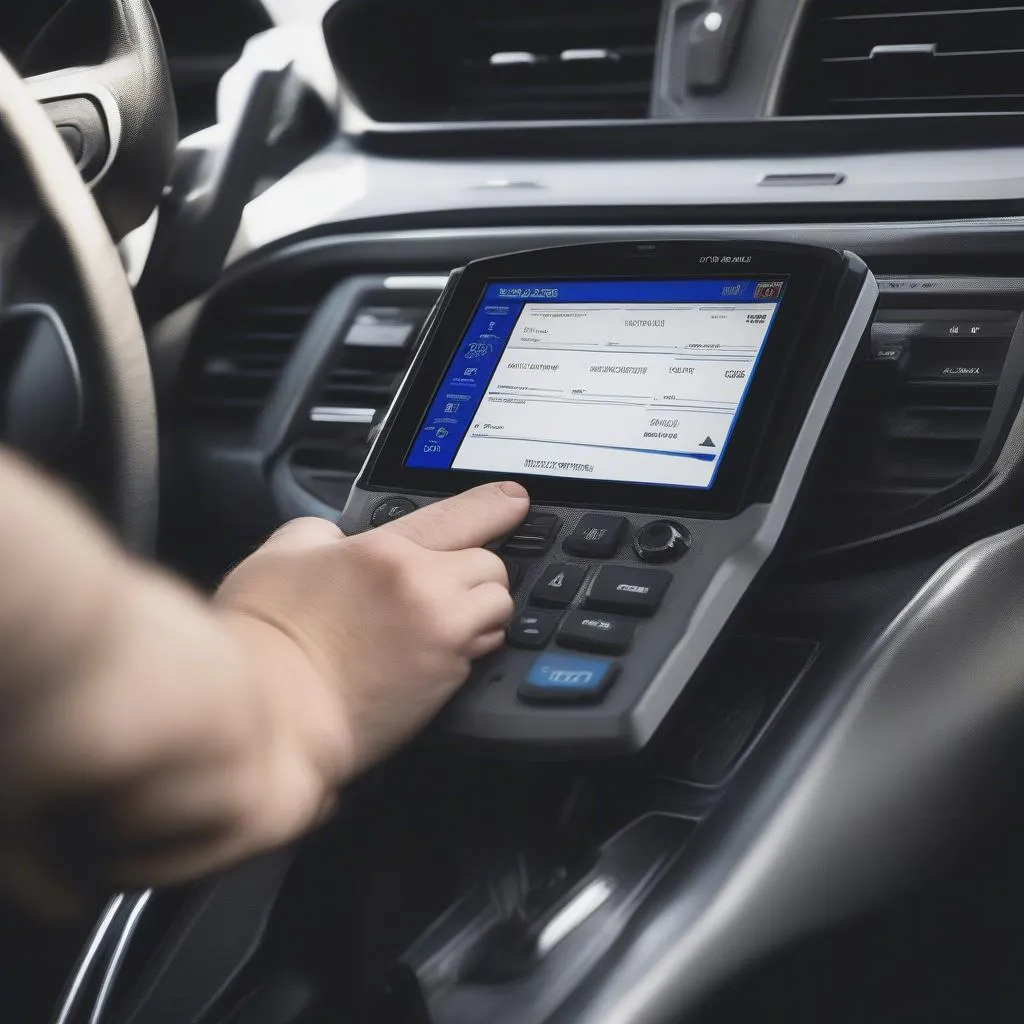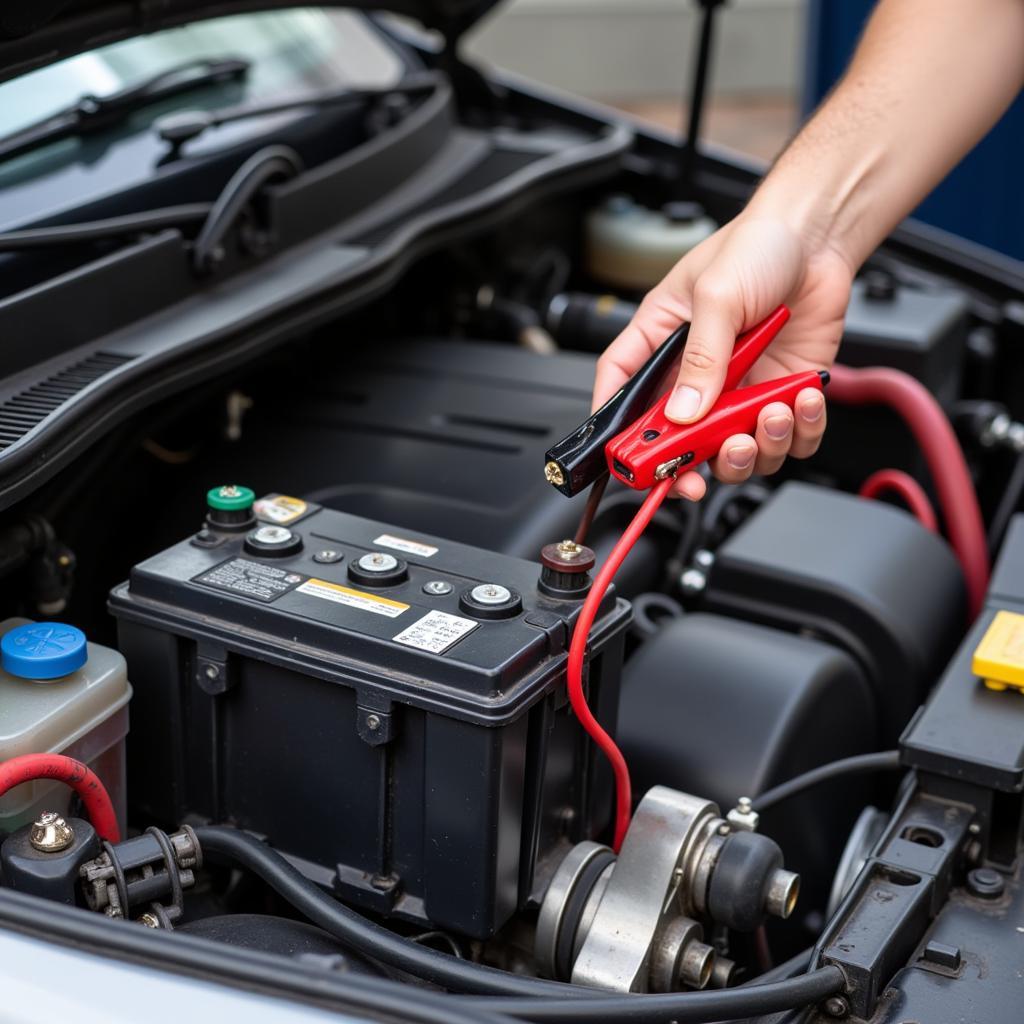The dreaded BMW brake pad replacement warning light. It illuminates your dashboard, injecting a dose of anxiety into your otherwise smooth drive. This guide dives deep into the meaning of this warning, its potential causes, and how to address them, potentially saving you time and money.
As a specialist in automotive electrical engineering with expertise in remote diagnostics, programming, and software installations, I’ve seen my fair share of brake pad warning light issues. This guide aims to equip you with the knowledge to understand and potentially resolve this common BMW concern. What does it mean when your BMW brake pad warning light comes on? It usually signifies that your brake pads are nearing the end of their lifespan and need replacing. However, the warning light can sometimes be triggered by other issues.
The brake warning light remains on even after changing the brake pads? This might be due to a faulty sensor or wiring issue. Further investigation is usually required to pinpoint the root cause. You might want to check our article on the brake warning light remains on for more insights.
Understanding the BMW Brake Pad Warning System
BMW employs a sophisticated electronic system to monitor brake pad wear. Small sensors embedded within the brake pads themselves measure the remaining friction material. When the pad thickness reaches a critical level, the sensor triggers the warning light on your dashboard. This is a crucial safety feature, alerting you to potential braking problems before they become serious.
Why is the BMW Brake Pad Warning Light Important?
Ignoring the brake pad warning light can lead to significant problems. Driving with worn brake pads compromises stopping power, increasing your stopping distance and the risk of accidents. Furthermore, excessively worn pads can damage the brake rotors, leading to costly repairs.
Common Causes of the BMW Brake Pad Warning Light
While worn brake pads are the most common cause, several other factors can trigger the warning light:
- Worn Brake Pad Sensors: The sensors themselves can malfunction, triggering the light prematurely. This can occur due to damage, corrosion, or simply reaching the end of their lifespan.
- Faulty Wiring: Damaged or corroded wiring in the brake system can disrupt the signal from the sensors, causing the warning light to illuminate.
- Low Brake Fluid: While a separate warning light usually indicates low brake fluid, in some cases, it can also trigger the brake pad warning light.
- Brake Pad Sensor Harness Issue: If you recently had your brake pads replaced, then the mechanic may not have installed the sensor harness correctly, this could cause the warning light to remain on. Check to ensure the connection is secure, if the light persists then there might be more serious issues with the sensor and or harness.
- ABS Module Issues: Though rare, a faulty ABS module can sometimes trigger the brake pad warning light, although usually it has its own warning light. Professional diagnostics is needed to rule this out.
If you are experiencing issues with your BMW Z4 parking brake warning light, you can find helpful information in our dedicated article on BMW Z4 parking brake warning light.
What to Do When the BMW Brake Pad Warning Light Comes On
- Check Your Brake Pads: Visually inspect your brake pads for wear. If they appear thin, it’s time for a replacement.
- Check Brake Fluid Level: Ensure your brake fluid reservoir is topped up to the correct level.
- Consult a Professional: If you’re unsure about the cause or uncomfortable performing the repairs yourself, consult a qualified BMW technician. They have the expertise and diagnostic tools to pinpoint the issue and perform the necessary repairs.
You might be interested in our article on BMW 116i brake warning light for specific information related to this model.
Preventing Future Brake Pad Warning Light Issues
Regular brake maintenance is crucial for preventing future issues. This includes:
- Regular Brake Inspections: Have your brakes inspected at every service interval.
- Quality Brake Pads: Use high-quality brake pads designed for your BMW model.
- Avoid Harsh Braking: Aggressive driving habits can accelerate brake pad wear.
Conclusion
The BMW brake pad replacement warning light serves a vital safety function. Addressing the issue promptly can save you from costly repairs and ensure your safety on the road. Don’t ignore the warning; take action to ensure your BMW’s braking system is in optimal condition. Remember, regular maintenance is key to preventing future problems and keeping your BMW running smoothly. For those driving a classic BMW, understanding the BMW E30 brake light warning can be especially helpful.
FAQ
- How long can I drive with the brake pad warning light on? It’s not recommended to drive with the light on. Have your brakes inspected as soon as possible.
- Can I replace my BMW brake pads myself? While possible, it’s recommended to have a qualified technician perform the replacement.
- How often should I replace my BMW brake pads? Brake pad lifespan varies depending on driving habits and conditions. Consult your BMW owner’s manual for recommended service intervals.
- What is the cost of replacing BMW brake pads? The cost varies depending on your BMW model and the type of brake pads used.
- Can I reset the brake pad warning light myself? Yes, but it’s advisable to have it reset by a technician after the brake pads have been replaced.
- What if the light stays on after replacing the pads? There might be a faulty sensor or wiring issue. Further diagnostics are needed. You might find our article on BMW brake pad warning staying on useful.
- Is it safe to drive with worn brake pads? No, it significantly compromises your stopping power and increases the risk of accidents.


